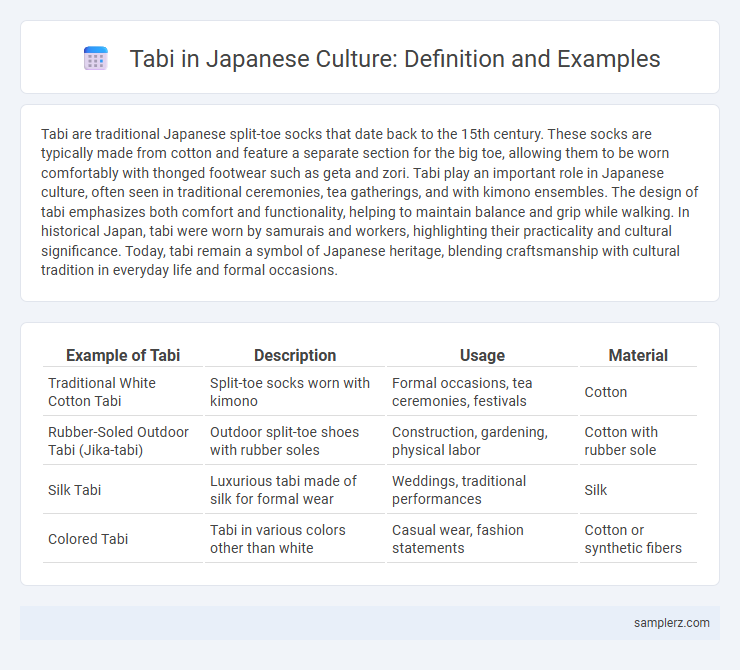Tabi are traditional Japanese split-toe socks that date back to the 15th century. These socks are typically made from cotton and feature a separate section for the big toe, allowing them to be worn comfortably with thonged footwear such as geta and zori. Tabi play an important role in Japanese culture, often seen in traditional ceremonies, tea gatherings, and with kimono ensembles. The design of tabi emphasizes both comfort and functionality, helping to maintain balance and grip while walking. In historical Japan, tabi were worn by samurais and workers, highlighting their practicality and cultural significance. Today, tabi remain a symbol of Japanese heritage, blending craftsmanship with cultural tradition in everyday life and formal occasions.
Table of Comparison
| Example of Tabi | Description | Usage | Material |
|---|---|---|---|
| Traditional White Cotton Tabi | Split-toe socks worn with kimono | Formal occasions, tea ceremonies, festivals | Cotton |
| Rubber-Soled Outdoor Tabi (Jika-tabi) | Outdoor split-toe shoes with rubber soles | Construction, gardening, physical labor | Cotton with rubber sole |
| Silk Tabi | Luxurious tabi made of silk for formal wear | Weddings, traditional performances | Silk |
| Colored Tabi | Tabi in various colors other than white | Casual wear, fashion statements | Cotton or synthetic fibers |
Understanding Tabi: Definition and Cultural Significance
Tabi are traditional Japanese split-toe socks, typically made from cotton and designed to be worn with zori or geta sandals. Rooted in Japan's Edo period, tabi symbolize a blend of practicality and cultural heritage, reflecting the importance of footwear etiquette in Japanese society. Their distinct design not only enhances comfort and mobility but also plays a role in ceremonial dress and traditional arts like tea ceremony and noh theater.
Historical Origins of Tabi in Japan
Tabi, traditional Japanese split-toe socks, originated in the 15th century during the Muromachi period as practical footwear for samurai and commoners to wear with sandals like waraji and zori. Made from durable cotton with a separation between the big toe and other toes, tabi facilitated better grip and balance for walking and martial activities. Their historical significance is tied to Japan's evolving social customs, distinguishing them as a cultural symbol deeply embedded in Japanese attire and ritual practices.
Traditional Uses of Tabi in Japanese Society
Tabi, traditional Japanese split-toe socks, have been integral to Japanese culture, primarily worn with kimono and paired with zori or geta sandals. These socks symbolize formality and are essential in ceremonies like tea rituals and traditional dance performances, reflecting deep cultural values. The design enhances comfort and functionality, allowing wearers to maintain balance and grace in traditional footwear.
Tabi and Japanese Performing Arts (Noh, Kabuki, etc.)
Tabi, traditional Japanese split-toe socks, play a vital role in Japanese performing arts such as Noh and Kabuki, enhancing both aesthetics and movement. These white cotton socks allow performers to maintain balance and precision on stage while preserving cultural authenticity. Tabi's functional design supports complex footwork essential in these classical theatrical forms.
Tabi in Religious and Ceremonial Contexts
Tabi, traditional Japanese split-toe socks, play a significant role in religious and ceremonial contexts, often worn during Shinto rituals and tea ceremonies to symbolize purity and respect. These socks are paired with zori or geta sandals, enhancing the formal attire required for sacred occasions. Their design facilitates grace and proper movement, reflecting cultural reverence in spiritual practices across Japan.
Modern Adaptations of Tabi Footwear
Modern adaptations of tabi footwear in Japan blend traditional split-toe design with contemporary materials, enhancing comfort and durability for urban use. Brands incorporate innovative fabrics such as neoprene and breathable mesh to suit everyday wear, while maintaining the iconic separation between the big toe and other toes. This fusion appeals to fashion enthusiasts and athletes, reflecting a cultural shift toward practical yet stylish reinterpretations of tabi shoes.
Tabi in Japanese Martial Arts Practices
Tabi in Japanese martial arts are traditional split-toe socks designed to enhance balance and agility during practice. These socks, often made from cotton, provide a tactile connection to the floor, crucial for precise footwork in arts like Kendo, Aikido, and Ninjutsu. Wearing tabi supports the practitioner's stability and prevents slippage, reinforcing traditional discipline and movement techniques intrinsic to Japanese martial culture.
Tabi Symbolism in Japanese Festivals
Tabi, traditional Japanese split-toe socks, symbolize purity and protection during festivals such as Matsuri, where participants wear them to connect with spiritual heritage and maintain cleanliness. Their white color represents sacredness, often paired with tabi shoes in Shinto ceremonies, emphasizing respect and tradition. Tabi's distinctive design enhances mobility, reflecting the dynamic and disciplined movements essential in ritual dances and performances.
The Role of Tabi in Japanese Fashion Trends
Tabi, traditional Japanese split-toe socks, play a significant role in contemporary Japanese fashion trends by blending historical aesthetics with modern design. They are frequently paired with both traditional kimono attire and streetwear, highlighting a resurgence of interest in cultural heritage through fashion. Influential designers and fashion brands incorporate tabi-inspired footwear and accessories, showcasing the enduring impact of tabi on Japan's evolving fashion landscape.
Noteworthy Tabi Manufacturers and Artisans
Tabi, traditional Japanese split-toe socks, are expertly crafted by renowned manufacturers such as Marugo and Komehyo, who blend centuries-old techniques with modern materials to ensure comfort and durability. Artisans in regions like Fukusaki excel in producing hand-stitched, high-quality tabi that are prized for their precise fit and intricate designs. These manufacturers and artisans preserve cultural heritage while meeting contemporary fashion demands, making tabi a symbol of Japanese craftsmanship.

example of "tabi" in "Japan Infographic
 samplerz.com
samplerz.com